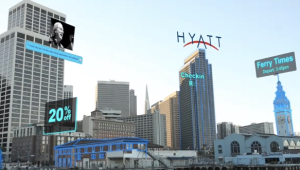 Good Morning Readers.
Good Morning Readers.  Today, on the sixth anniversary of BRANDEMiX and the BRANDEblog, it seems like a good opportunity to look back on what I’ve accomplished and share with you all that I’m thankful for.
Today, on the sixth anniversary of BRANDEMiX and the BRANDEblog, it seems like a good opportunity to look back on what I’ve accomplished and share with you all that I’m thankful for.2005 was a very different world, and not just because everyone’s mortgage was secure and Barack Obama was still the junior senator from Illinois.
The internet in April of that year would hardly be recognizable to us now. Facebook existed, but it was available only to students at Harvard, Yale, Stanford, and Columbia. YouTube’s first video had just been uploaded. It would be another year before Twitter, another two years before the iPhone, and another four years before Foursquare. This rather empty social media landscape was ruled by MySpace, which was only a few months from its $580 million sale to News Corp.
Into this environment came BRANDEMiX and the BRANDEblog, and I was seen (not all that favorably) as an agent for communications change. My crime? Advocating the use of blogs!
Thankfully we've moved on (and by the way moved physically 3 times)!
I’ve been amazed to watch the scope of BRANDEMiX services expand from recruitment marketing, website development, and of course, employer branding to managing complex consumer branding projects, advertising, digital marketing and social media campaigns for wonderful clients in all industries and locations.
I’ve also had the privilege of speaking and presenting all over the world, bringing my workshops on the Four Essential Social Media Profiles and my “One Brand” philosophy to conferences and organizations of all kinds. Six years ago, we were all “SoMe Starters,” but now I get to consult and help create “SoMe Superstars.” Nothing makes me happier than watching someone who didn’t know a hashtag from a hash brown look at me and say, “I get it now.”
From internal communications projects like onboarding, benefits and wellness, and employee rewards, to public efforts like consumer branding and marketing, We have assisted companies with both their employer brand and their consumer brand, bridging the gap from marketing to HR.
And I’m supported in my endeavors by the finest designers, writers, service professionals and marketers, not just in New York City but perhaps the entire country. So big thanks to Jason, John, Katie, Anita and Stacey for leading the teams that bring the magic to the mix.
And thanks to you A-man for reminding us of the celebratory day. And shout-out to all the FOB's (Jayne, you were the first Friend of BRANDEMiX) for believing.
Looking back at the past six years, I consider myself a success…until I realize that I started my company at the same time that Mark Zuckerberg founded Facebook.
Maybe I haven’t quite arrived at his level yet, but I’m sure enjoying the journey. Thanks for coming along for the ride.



